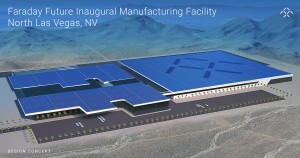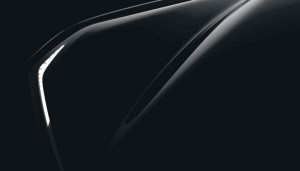Electric cars love Lithium and Nevada
As I plug in my Chevy Volt, I smile at the thought of a new day dawning in Nevada. As the Silver Rush of the 1800’s and Gambling in the 1900’s marked our statehood history, alternative energy is the 21st century version of a make-over for Nevada. Early stakeholders jumped to support Solar arrays and Wind-mill fields in the desert. Earth minerals dug from the desert sputtered with the global economy but Nevada has found its footing in Lithium. As Tesla, and the former FISKER, made its stance known in the resurrection of the auto industry post 2008, the appetite for electric vehicles started in the 1950’s with the EV-1, is now well into it’s teen years. Yes, gas may be cheap right now but the issues of global warming and sustainability have a firm foothold on the next generation. The millennials are now the managers of Faraday Future, guardians of their families future, both economically and life-sustaining.

Hybrid vehicle demand changing and charging.
Back in the day, think model year 2000, the choices for cars were few, driven by Toyota and Honda in a race to meet the CAFE standards set in place by then President Clinton. Four years later, an oil-bred President H. W. Bush pushed those mandates into the 2020’s and the majority of automakers went back to the sidelines. However, the appetite had been wet and demand continued to drive sales, albeit slowly. I’ve lived with versions 1 of the Hybrid Civic and Toyota Prius, when brake regeneration gave the hybrid technology its extra mpg. Hybrid battery warrranties were to 8 years or 80k miles and everyone from salesmen to technicians wondered what would happen when we got there. Along the way Honda met the State of California in a nasty class-action lawsuit over claims of 40+MPG which could not be substantiated consistently and under various conditions failed completely. They replaced Hybrid batteries, flashed software and double-downed on the hybrid warranty along with a few rebates to salve the loyalists. We forgave and forgot, and the batteries got better as we learned what freezing cold weather in Vermont and desert heat in Death Valley do to hybrid technology.Plugin’s arrive and prices prevail.
 Today we have an assortment of hybrid technology vehicles, confusing to the consumer… We have TESLA, the luxury leader with direct to consumer sales and service. They offer a sexy design and choice of hybrid batteries designed for the owner’s needs: 100, 200 or 300 mile designations. The electric-only designation is rarely an issue for this consumer, who often flies their private plane for trips over 3 hours. The company has carefully crafted a rapid charging infrastructure to meet the needs of their target clients, which include California, where the heaviest concentration of Tesla garages.
BMW has jumped in with the i8 and i3, a perfect duo for the Baby-boomers wanting both sexy sports car and fun suv. Both are Plug-in Electric-gas combos: The i8 offering a sports-car typical 30 mile range in electric mode and 28 mpg in gas engine back-up, at $141,000, it is the most expensive hybrid electric-gas vehicle in the mass-production luxury range. The i3 brings the cost of entry to a more manageable level at $52,000.00*, with an estimated 80 mile range on the charge and 41 in gas mode. *with range extender.
Porsche rushed a Panamera electric-gas combo to market in 2014, with a 38 electric range and 24 mpg in gas mode, the $124,000.00 price and limited production never really hit home.
Cadillac took the Chevy Volt and put the CTS body on it, but added nothing else to justify the $65,000.00 price.
Today we have an assortment of hybrid technology vehicles, confusing to the consumer… We have TESLA, the luxury leader with direct to consumer sales and service. They offer a sexy design and choice of hybrid batteries designed for the owner’s needs: 100, 200 or 300 mile designations. The electric-only designation is rarely an issue for this consumer, who often flies their private plane for trips over 3 hours. The company has carefully crafted a rapid charging infrastructure to meet the needs of their target clients, which include California, where the heaviest concentration of Tesla garages.
BMW has jumped in with the i8 and i3, a perfect duo for the Baby-boomers wanting both sexy sports car and fun suv. Both are Plug-in Electric-gas combos: The i8 offering a sports-car typical 30 mile range in electric mode and 28 mpg in gas engine back-up, at $141,000, it is the most expensive hybrid electric-gas vehicle in the mass-production luxury range. The i3 brings the cost of entry to a more manageable level at $52,000.00*, with an estimated 80 mile range on the charge and 41 in gas mode. *with range extender.
Porsche rushed a Panamera electric-gas combo to market in 2014, with a 38 electric range and 24 mpg in gas mode, the $124,000.00 price and limited production never really hit home.
Cadillac took the Chevy Volt and put the CTS body on it, but added nothing else to justify the $65,000.00 price.
Welcome Faraday Future
 The Chevy Volt roll continues to prevail, buoyed by a 50+ mile range, clever styling and extraordinary used car values. Electric Plug-ins with gas back-up seem to be the product choice of the masses. The Prius Electric is still sold in limited quantity as consumers wait for a combo version while the Nissan Leaf has died on the vine. Current LEAF owners have been offered generous lease extensions to keep them loyalty until the alleged 250 mile range arrives sometime in 2017. Gone is the range anxiety issue of the FISKER. With the recent hoverboard issue of less expensive, longer-range batteries catching fire, the answer seems to be in quality, regulation and standardization.
Meanwhile we anxiously await the unveiling of the newest member in the club: Faraday Future. CES unveil January 6th, Faraday Future will unveil their long-awaited entry. The management bloodline extends from Tesla and BMW, giving promise to the best of both worlds. The crafty sneak photos show two body lines, and an LED lamp. EV owners and Nevadans are once again hopeful, ever-ready to place their bets and let the dice roll. The contracts and statutes extended between the company and the State of Nevada promise great tax benefits to help the start-up grow into the 4500 jobs projected when the plant is fully functional. The unions and community of colleges are vying for their place in the next growth industry. The Nevada dealer association has been quiet thus far, as they were when Tesla came to town. There is much we don’t know about this car company, but what we do know is lithium, the latest mining treasure, is critical to the next economic boon.
——————————————-
Stay tuned here for the great reveal.
————————————–
Sarah Lee Marks is MyCarlady. She has over 25+ years of experience.
She writes about cars, and is a staunch consumer advocate on car related subjects.
MyCarlady offers free car buying advice, SMARTeen Driver teen driver and CAR-EDU auto safety and car care clinics and private, auto-related services to help you maintain your personal or commercial vehicles.
Contact Sarah Lee for more information: sarahlee@mycarlady.com,mvides422@gmail.com,carlady@cox.net Join the MyCarlady newsletter to be kept up-to-date on this and other important car information.
]]>
The Chevy Volt roll continues to prevail, buoyed by a 50+ mile range, clever styling and extraordinary used car values. Electric Plug-ins with gas back-up seem to be the product choice of the masses. The Prius Electric is still sold in limited quantity as consumers wait for a combo version while the Nissan Leaf has died on the vine. Current LEAF owners have been offered generous lease extensions to keep them loyalty until the alleged 250 mile range arrives sometime in 2017. Gone is the range anxiety issue of the FISKER. With the recent hoverboard issue of less expensive, longer-range batteries catching fire, the answer seems to be in quality, regulation and standardization.
Meanwhile we anxiously await the unveiling of the newest member in the club: Faraday Future. CES unveil January 6th, Faraday Future will unveil their long-awaited entry. The management bloodline extends from Tesla and BMW, giving promise to the best of both worlds. The crafty sneak photos show two body lines, and an LED lamp. EV owners and Nevadans are once again hopeful, ever-ready to place their bets and let the dice roll. The contracts and statutes extended between the company and the State of Nevada promise great tax benefits to help the start-up grow into the 4500 jobs projected when the plant is fully functional. The unions and community of colleges are vying for their place in the next growth industry. The Nevada dealer association has been quiet thus far, as they were when Tesla came to town. There is much we don’t know about this car company, but what we do know is lithium, the latest mining treasure, is critical to the next economic boon.
——————————————-
Stay tuned here for the great reveal.
————————————–
Sarah Lee Marks is MyCarlady. She has over 25+ years of experience.
She writes about cars, and is a staunch consumer advocate on car related subjects.
MyCarlady offers free car buying advice, SMARTeen Driver teen driver and CAR-EDU auto safety and car care clinics and private, auto-related services to help you maintain your personal or commercial vehicles.
Contact Sarah Lee for more information: sarahlee@mycarlady.com,mvides422@gmail.com,carlady@cox.net Join the MyCarlady newsletter to be kept up-to-date on this and other important car information.
]]>
